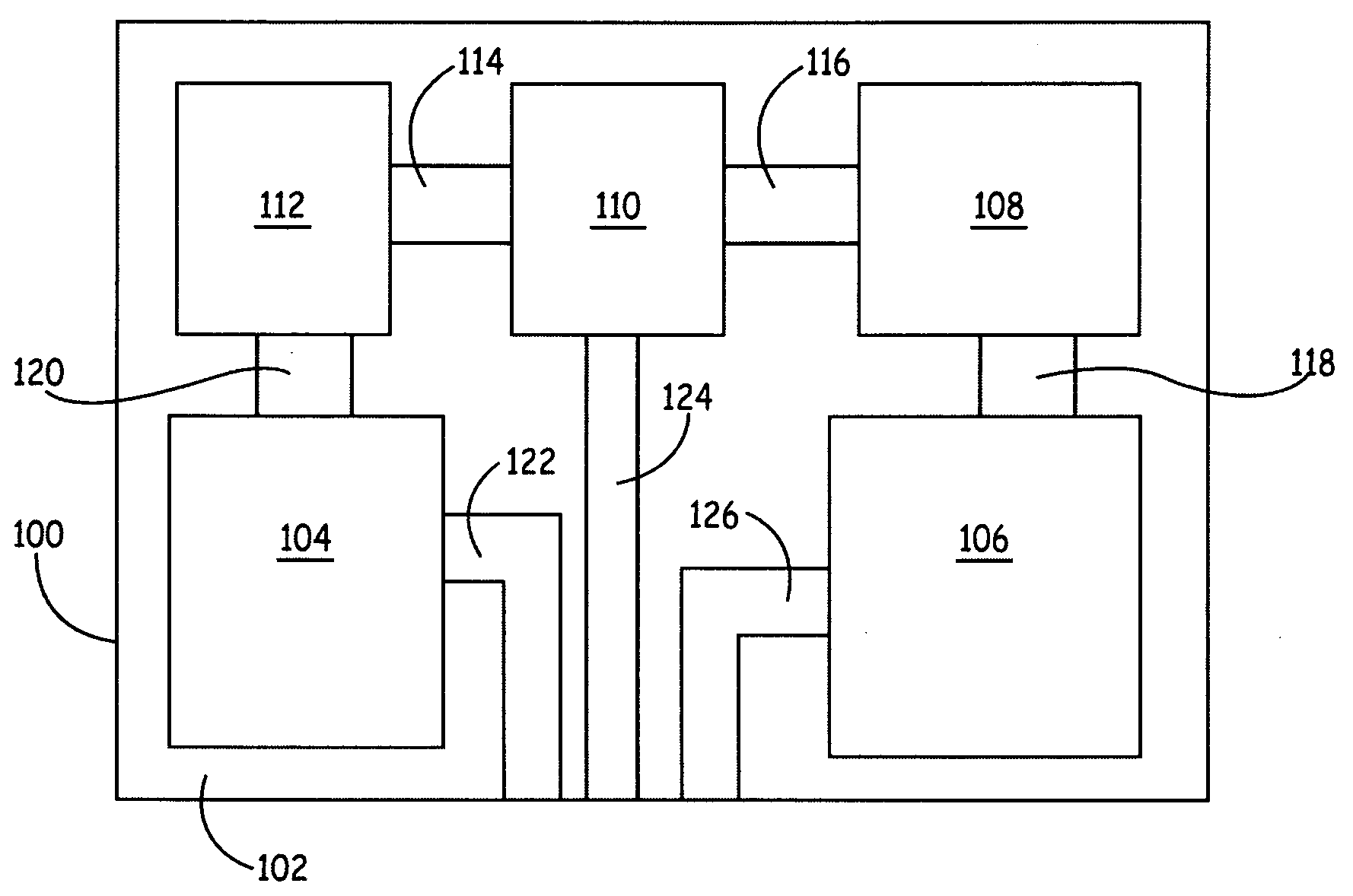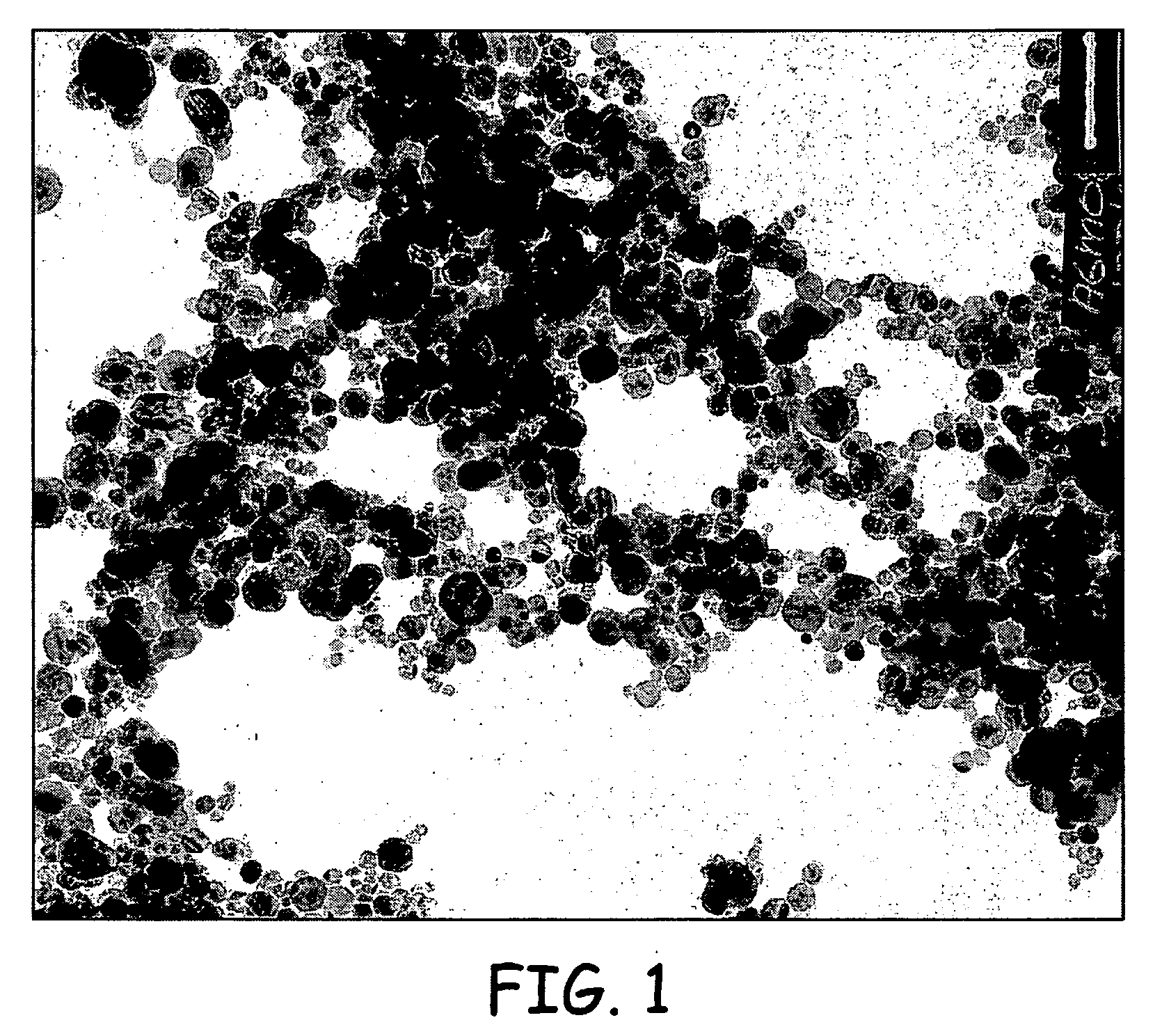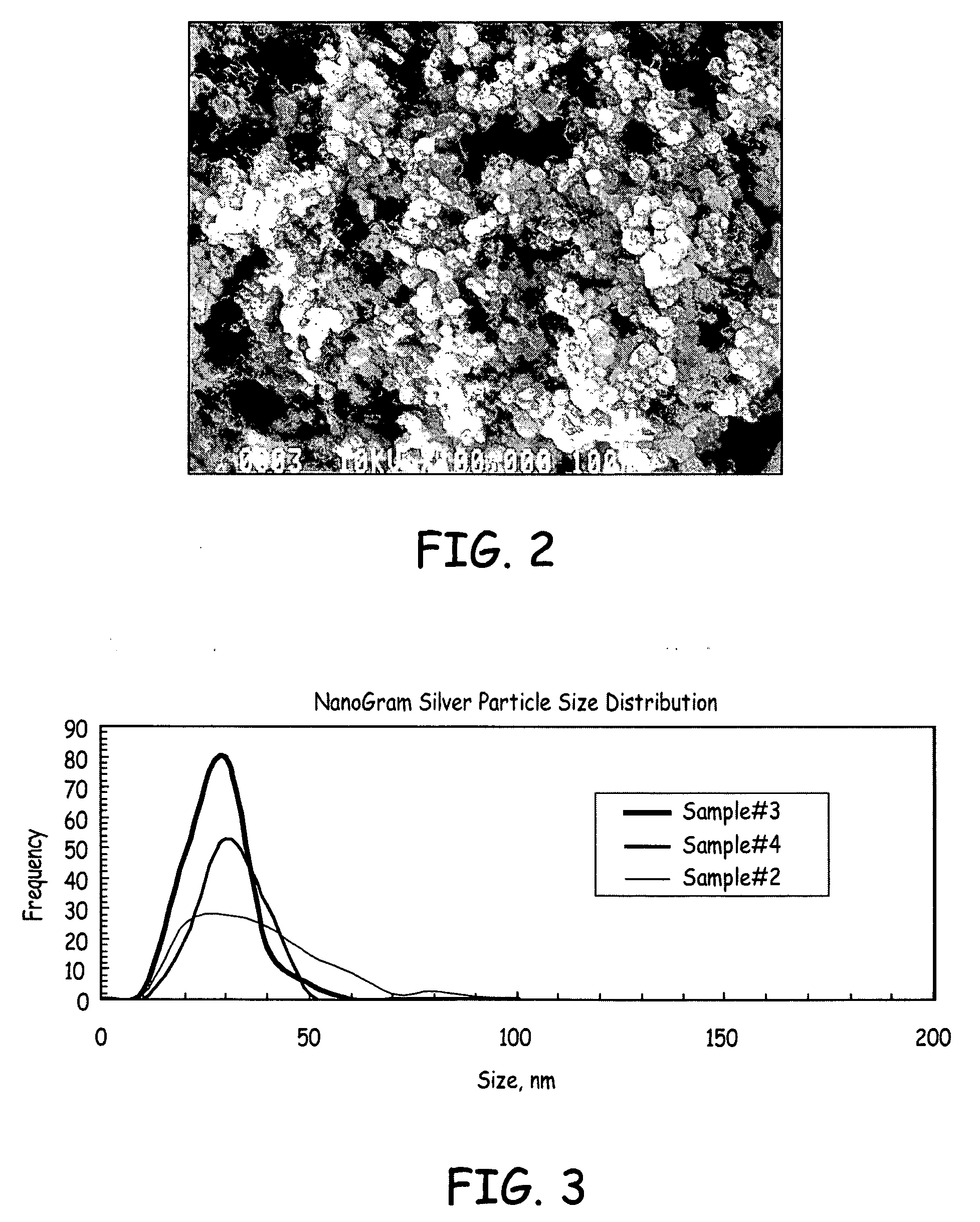Functional composites, functional inks and applications thereof
a functional composite and functional ink technology, applied in the field of functional composites and functional inks, can solve the problems of additional challenges, cost constraints, and the inability to meet the needs of greater performance, and achieve the effect of substantial crystallinity
- Summary
- Abstract
- Description
- Claims
- Application Information
AI Technical Summary
Problems solved by technology
Method used
Image
Examples
Embodiment Construction
[0030]Desirable composite materials comprise submicron inorganic particles of an elemental metal or metalloid, along with a binder matrix, such as an organic semiconducting composition in which the particles are well dispersed within the matrix. In alternative or additional embodiments, the submicron inorganic particles comprise a metal oxide, a metalloid oxide, a combination thereof or a mixture thereof in a semiconducting organic matrix. In some embodiments, the composite materials can be deposited using functional inks that incorporate highly uniform inorganic particles with a matrix material within a deliverable liquid ink suitable for forming the composites with high particle loadings. In general, the matrix material binding the inorganic submicron particles can be an organic binder, such as organic semiconducting polymers. The highly uniform inorganic particles can be doped particles, such as doped crystalline silicon particles, although other doped or undoped elemental inorga...
PUM
| Property | Measurement | Unit |
|---|---|---|
| particle size | aaaaa | aaaaa |
| particle size | aaaaa | aaaaa |
| particle size | aaaaa | aaaaa |
Abstract
Description
Claims
Application Information
 Login to View More
Login to View More - R&D
- Intellectual Property
- Life Sciences
- Materials
- Tech Scout
- Unparalleled Data Quality
- Higher Quality Content
- 60% Fewer Hallucinations
Browse by: Latest US Patents, China's latest patents, Technical Efficacy Thesaurus, Application Domain, Technology Topic, Popular Technical Reports.
© 2025 PatSnap. All rights reserved.Legal|Privacy policy|Modern Slavery Act Transparency Statement|Sitemap|About US| Contact US: help@patsnap.com



